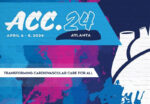Drug-coated balloons (DCB) have proven to be effective in the treatment of femoropopliteal pathology, although they entail complications such as recoil, residual stenosis, and dissection. Their outcomes could be improved through proper and enhanced vessel preparation, both before and after the procedure. Intravascular ultrasound (IVUS) offers the advantage of characterizing plaque and assessing vessel diameter....
Tricuspid Valve Transcatheter Edge-to-Edge Repair in the “Real World”
Tricuspid valve transcatheter edge-to-edge repair (T-TEER) is currently under development, with an increasing number of conducted procedures. While the TRILUMINATE Study did not reveal benefit regarding major events, it did show improvements in quality of life. In the real world, we encounter numerous patients who do not meet the study criteria but still experience symptoms...
See the Presentations of the 2023 Perú Sessions
The XLVII SOLACI Regional Sessions – 16th Andean Region took place in Lima, Peru, between November 16 and 17, 2023.It was an extremely successful event that featured the participation of prestigious national and international guests and a high-level scientific program. Below, we share some of the presentations that were made during the Sessions. Dra. Carla...
AQCA Study: Pre-PCI Virtual QFR for Planning PCI vs. Conventional Angiography
Several studies have used physiological assessment after a percutaneous coronary intervention (PCI) to improve clinical outcomes. However, results are not entirely conclusive. The limitations of using these physiological assessment methods are the need for extra measurements with increased procedure time, more radiation, and more contrast, which in turn leads to higher costs. To counteract these...
ACC 2023 | RENOVATE-COMPLEX-PCI: Intravascular Imaging-Guided vs. Angiography-Guided Complex PCI
Patients with complex coronary artery disease (CAD) undergoing percutaneous coronary intervention (PCI) have worse clinical outcomes tan patients with non-complex CAD. Several studies have shown that the use of intravascular imaging (IVUS, OCT) have reduced major adverse events vs. angiography guided PCI. However, these studies present limitations both of size, studied population, short term followup...
FRAME-AMI: FFR vs. Angiography of Non-Culprit Vessel in ACS
This study compared fractional flow reserve (FFR) vs. angiography to guide the angioplasty of non-culprit vessels in patients with acute coronary syndrome (ACS) and multivessel disease. Landmark studies such as COMPLETE, COMPARE-ACUTE and DANAMI-3-PRIMULTI have demonstrated the prognostic value of revascularization (after treatment of the artery responsible for the ACS) of non-culprit arteries with respect...
Long-Term Mortality in Non-Obstructive Lesions in the Left Main Coronary Artery
Left main coronary artery (LMCA) intervention with significant lesions on both coronary angiography and intravascular ultrasound (IVUS), either through angioplasty (PCI) or myocardial revascularization surgery (MRS), is directly related to a decrease in long-term adverse clinical events. However, the relationship between subclinical LMCA disease (preserved luminal diameters) and long-term mortality is still unknown. A retrospective...
Angiographic Quantitative Flow Ratio-Guided Coronary Intervention: Promising Results at 2 Years
Functional assessment of coronary artery lesions with fractional flow reserve (FFR) or instant wave-free ratio (IFR) have shown improvement of most symptoms and clinical outcomes of patients with stable CAD. However, these tools recommended by the current guidelines increase procedure complexity, risk and cost. This is why the angiographic quantitative flow ratio-guided coronary intervention (QFR)...
Intermittent Claudication: Invasive Treatment Superior to Pharmacological Treatment?
Peripheral vascular disease is strongly associated to cardiovascular events and a negative impact on health status and quality of life. However, researchers are yet to determine the benefit of early intervention in patients presenting intermittent claudication, and whether it improves quality of life. At present, there is little information in this regard (CLEVER trial), and...
Coronary Angioplasty Evolution According to Syntax II: 5-Year Followup
It has been long since the SYNTAX (NEJM 2009) came out comparing percutaneous coronary intervention (PCI) against coronary artery bypass grafting (CABG). That emblematic study associated PCI with first generation drug eluting stents (Taxus) with increased major cardiac and cerebrovascular events (all-cause mortality, AMI, stroke, or any revascularization – MACCE) vs. CABG, at 5 years,...






